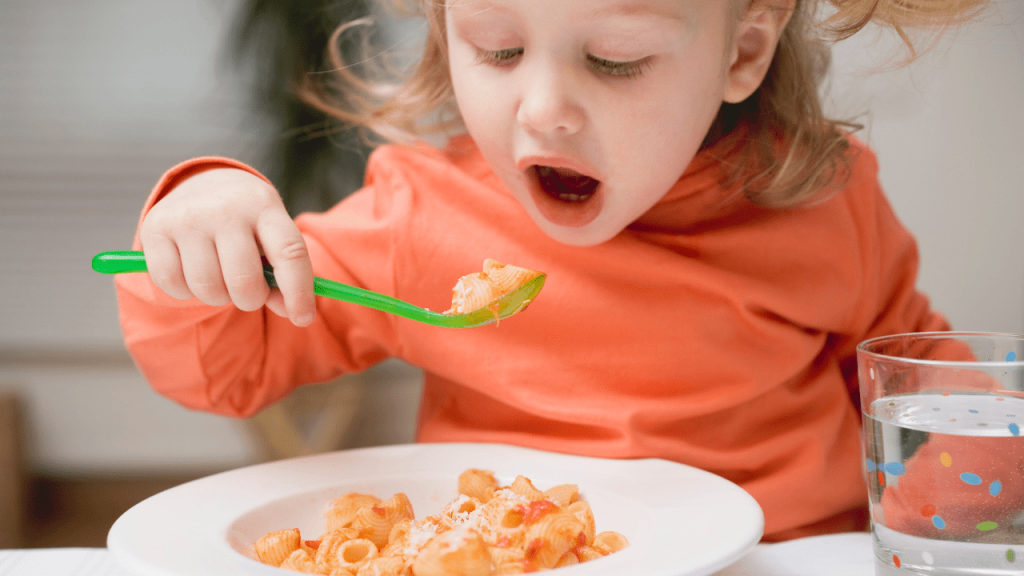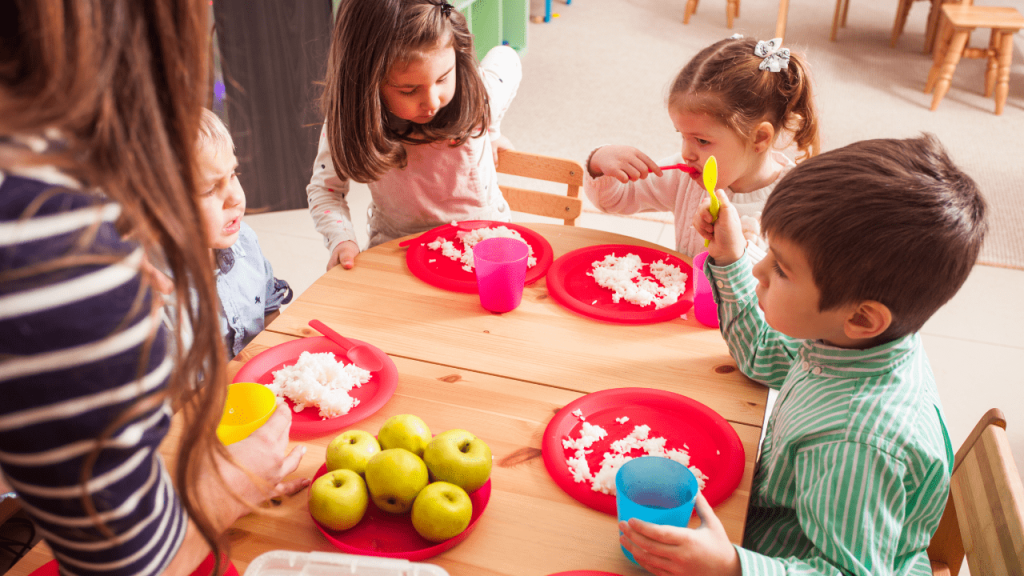Mealtime safety for kids is more than just preventing accidents. It’s about teaching responsibility, building good habits, and creating a safe and enjoyable environment at the table.
In this blog post, we’ll look at why mealtime safety matters and share practical tips to help families create safer routines.
Why Mealtime Safety for Kids Matters
Mealtime safety for kids is not just about choking prevention, although that’s a big part of it. It’s also about shaping a child’s early relationship with food — helping them feel calm, focused, and safe while eating. Children who learn to eat in a relaxed environment, without rushing or distractions, are more likely to build healthy habits that stay with them as they grow.
When mealtimes aren’t rushed, kids have the chance to chew their food properly, support healthy digestion, and most importantly — notice when they feel full. This is how they start to connect with their own hunger and fullness cues, something that plays a big role in building a balanced relationship with food for life.
Creating clear boundaries and safety routines during meals also gives parents peace of mind. Knowing your child understands simple food rules — like sitting down while eating or taking small bites — means fewer worries and more time to enjoy meals together.
And let’s not forget: many accidents happen at home, during everyday moments like eating. That’s why mealtime safety for kids should always be a part of your daily family life.
Practical Tips for Mealtime Safety for Kids
Here are some essential, practical, and easy-to-follow tips to promote mealtime safety for kids:
Always supervise young children during meals
Whether it’s a toddler or a school-aged child, make sure an adult is present. Supervision is the first line of defence.
Have kids sit down while eating
Running, walking or even lying down while eating increases the risk of choking. Always encourage your child to sit upright at the table.
Avoid distractions
Keep screens, toys, and other distractions away from the table. Help your child focus on their food, chewing, and swallowing.
Cut food into small, manageable pieces
Grapes, cherry tomatoes, sausages, and similar foods should always be sliced lengthwise and into small bits to reduce choking risk.
Encourage slow, mindful eating
Remind your child not to rush. Chewing thoroughly and eating at a steady pace is safer and better for digestion. Mindful eating is not only a safe way to eat, but also promotes a healthy relationship with food.
Don’t serve hard-to-chew foods to young kids
Raw carrots, popcorn, hard candy, and nuts can be dangerous for younger children. Wait until they are older and better able to chew thoroughly.

Teach basic table manners
Simple rules like “no talking with your mouth full” or “don’t laugh with food in your mouth” can actually reduce choking risk.
Promote independence but offer help when needed
Letting your child use utensils helps build skills, but be ready to assist with tricky foods or cutting when necessary.
Know your child’s pace and needs
Some children need more time to eat. Pressuring them to hurry up can lead to careless chewing or swallowing.
Be aware of allergies
If you’re hosting other children during meals, be informed of any food allergies and avoid risky foods.
All of these tips contribute to better mealtime safety for kids and help create healthy, trusting family routines.
Don’t Forget Choking Awareness
Even with the best habits, choking can still happen, especially with young children. Food is one of the most common choking hazards in the home.
That’s why every parent or caregiver should be prepared. Learn the signs of choking, such as difficulty breathing, inability to speak, coughing, or sudden silence. Always stay calm and follow the standard choking protocol if something goes wrong.
Mealtime safety for kids includes being aware of the risks and knowing what to do if a choking incident occurs. Preparation can make all the difference.

How LifeVac Can Help
As part of your home safety toolkit, LifeVac offers an extra layer of protection during mealtime emergencies.
LifeVac is a non-invasive, portable, anti-choking device that can help remove airway obstructions when standard methods like the Heimlich maneuver are not successful. It’s safe for all ages and requires no training to use.
In just three simple steps, LifeVac can clear the airway and potentially save a life. It has already helped save thousands of lives around the world, including many children.
LifeVac is MHRA registered, FDA registered and CE Marked. Learn more about it at www.lifevac.com.cy



